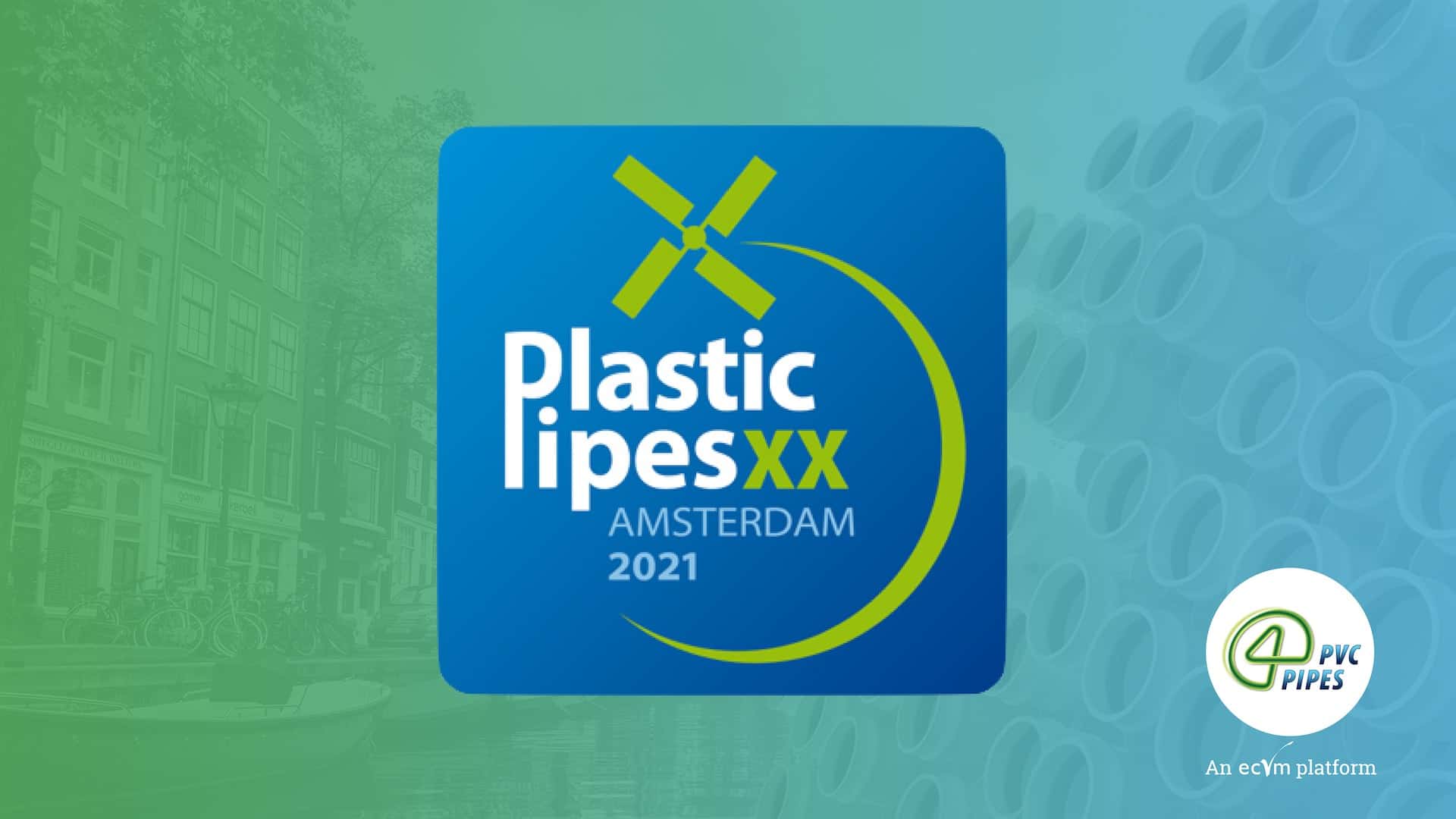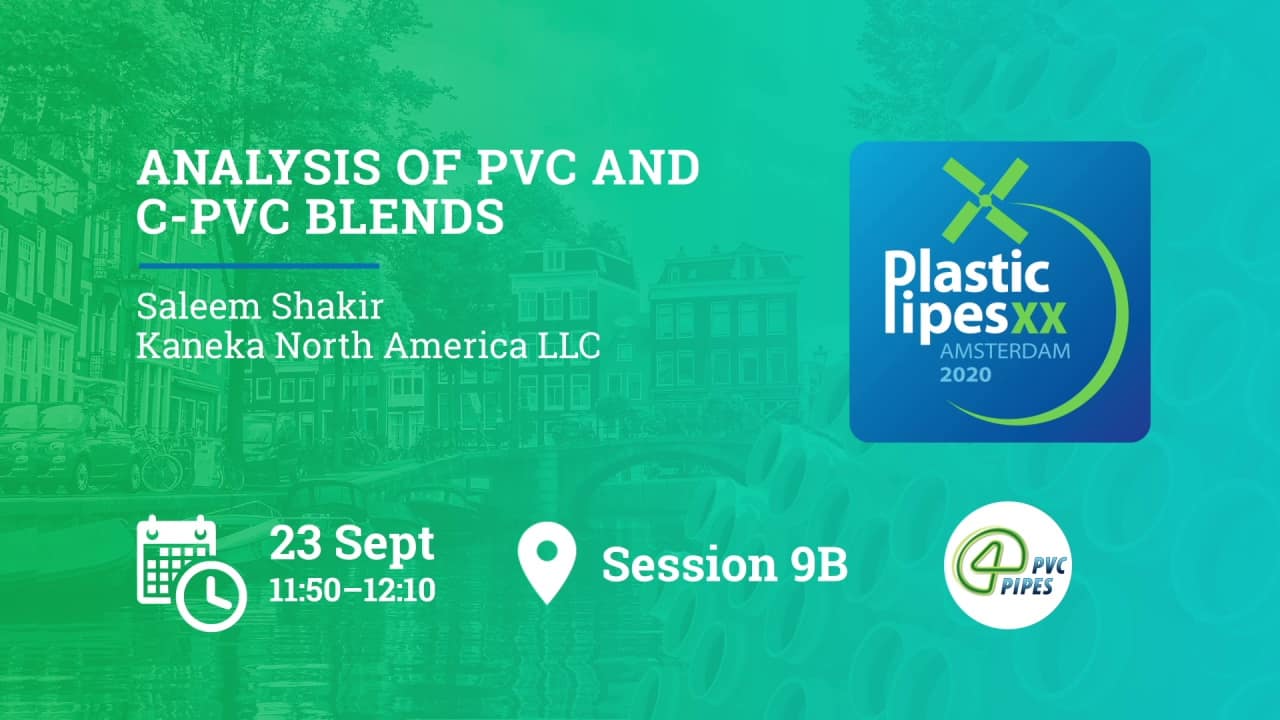
PVC pipe highlights at Plastic Pipes XX – Day 1
06/09/2021
PVC pipe highlights at Plastic Pipes XX – Day 3
09/09/2021Models to predict pipe failure in drinking water networks, irrigation with large diameter PVC-O pipes, recent developments in integral joint restraints and PVC pipes with superior root intrusion resistance were in focus on Day 2 of PPXX:
Karel van Laarhoven, KWR (The Netherlands): Unlocking model predictions of PVC-U lifetimes for the Dutch water utilities
Pipe failure in drinking water distribution networks occurs as a result of high loadings on the pipe. Prediction models that estimate when a particular pipe will fail are valuable tools in pipe replacement strategies. Karel Van Laarhoven has described the Consima computational tool developed for several Dutch utilities to support decisions in managing their assets. The tool consists of a numerical model that predicts the pipe stresses and joint rotations as a result of different loadings on the pipe. Failure occurs when the stresses or rotations exceed the maximum allowable values. The presented work implemented the current knowledge about the aging of PVC-U, the most used pipe material in the Netherlands.
After expansion of the numerical model with PVC-U-specific properties such as slow crack growth and residual stress, a sensitivity analysis of the model is conducted to visualize the dominant factors in pipe failure. This information helps the utilities in prioritizing their efforts on exit assessments and inspection.
Dolores Herran, Molecor Tecnología (Spain): PVC-O DN800: Efficient transformation from soil to irrigated land
Bringing irrigation to not productive lands with a cost effective and eco friendly solution, change the lives of the community. This case study presented by Dolores Herran covered a project to transform 244 hectares into irrigated land in the La Sarda region of the Bringing irrigation to not productive lands with a cost effective and eco friendly solution, change the lives of the community. This case study presented by Dolores Herran covered a project to transform 244 hectares into irrigated land in the La Sarda region of the municipality of Pedrola (Zaragoza, Spain) with DN800, PN16 bar PVC-O pipes, and how the most cost effective alternative was chosen among cast iron, helical steel and reinforced concrete with metal sleeve. Dolores Herran has explained in detail the background of the project as well as the purpose and planned solution of the works together with the implementation phases, calculations made and conclusions reached.
Peter Dahlerup, Hultec Europe: Recent developments in integral joint restraints
By including the gasket in the pipe belling process and introducing a relatively stiff metal reinforcement, PVC pipe belling with an integrated gasket provides multiple advantages: elimination of the installation step, pairing of the seal OD and the raceway ID dimensions, elimination of contamination of the raceway surface; almost impossible dislocation of the seal during spigot assembly.
Peter Dahlerup has reviewed key learnings from the last 20 years and presented practical insights as the technology evolved. In addition to new perspectives and design possibilities, Peter has provided a refreshing look back into history and the ability to come up with simple and effective solutions for such a challenging task as the integral design of pipe joints and their gaskets. These developments have open the door for PVC-A pipes to demanding installation processes such as Horizontal Directional Drilling.
Gianpaolo Contarini, IPM srl (Italy): PVC pipes with Superior Root Intrusion Resistance
Being lightweight, easy to install and to maintain, socketed PVC-U pipes are a popular choice for sewer systems. Clogging due to the intrusion of roots from plants and trees can however be experienced after a short period of service,. These roots strain the connections between pipes, in particular the sockets and the gaskets. This strain will compromise the seal and hinder the passage of the water.
A new pipe joining technology has been developed to solve this challenge. After the socketing station, the socketed pipes are processed in another station equipped with a device able to manufacture a lip-ring inside the socket. When the male pipe is inserted during the pipe installation, the lip-ring is pushed, thus closing the space normally existing between the male and the female sewer pipes. A mechanical barrier preventing the infiltration of the roots is created. ISO 13259-compliant lab tests have certified the tightness of the elastomeric ring joints. Sockets manufactured with the technology, are EN 1401-compliant.










